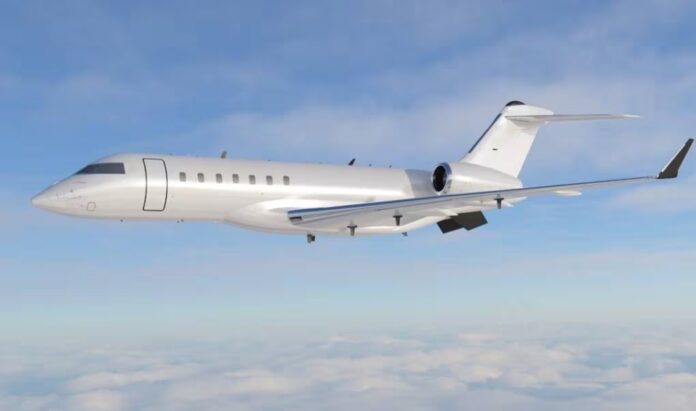- The new aircraft will bring “increased range, speed, endurance and aerial [intelligence, surveillance and reconnaissance] depth
WASHINGTON: The US Army has announced on Wednesday that it has awarded a contract to Bombardier Defense to deliver at least one Global 6500 aircraft as a prototype for a new spy plane program. The contract, which was awarded on Dec. 12, has an option to buy two more aircraft over a span of three years. The first aircraft is expected to be delivered by Oct. 1, according to the statement.
The new spy plane program, called the High Accuracy Detection and Exploitation System, or HADES, will be the first of its kind in the Army to use a large-cabin business jet with advanced deep-sensing capabilities, the service said. The new aircraft will offer “enhanced range, speed, endurance and aerial [intelligence, surveillance and reconnaissance] depth,” said Col. Joe Minor, the Army’s project manager for fixed-wing aircraft, in the statement.
“HADES will fly at higher altitudes than legacy turboprop platforms. Higher altitudes mean a greater ability to sense deeper and more continuously into areas of interest,” he added. “Deep sensing is the Army’s top operational priority for the Army of 2030.” The Army is upgrading its aerial reconnaissance and electronic warfare capabilities as it transitions from its old Guardrail turboprop planes to better prepare for possible large-scale conflict with Russia and China. The service wants a plane with much higher duration, speed and payload capacity that can see, detect and target threats from further distances. Before the HADES program of record, the Army has developed and flown extensively technology demonstrators.
These spy planes have flown nearly 1,000 missions in the European and Indo-Pacific regions. Two more demonstrator aircraft are planned to deploy in 2024. The service has deployed two aerial ISR demonstrators since 2020, named Artemis and Ares. Artemis has flown more than 600 missions in support of US European Command’s operations; Ares has flown 300 missions in the Indo-Pacific. The Pentagon has stated a need to be able to engage China from a distance. That requires a certain type of asset that can perform the mission at a long range. Artemis — or Aerial Reconnaissance and Targeting Exploitation Multi-Mission Intelligence System — uses a Bombardier Challenger 650 aircraft.
The Army in 2019 awarded a contract to HII, and the company then awarded a subcontract to Leidos to build the aircraft. Ares — or Airborne Reconnaissance and Electronic Warfare System – uses a Bombardier Global Express 6500 aircraft. Alion Science and Technology, which is now owned by HII, won a contract to build the aircraft in 2020 and then awarded a subcontract to L3Harris Technologies to do the work. The Bombardier Global Express 6500 is larger than the Challenger 650.
The bigger platform gives the Army longer ranges and higher altitudes, both of which are seen as key capabilities in the Pacific area. Two more Athena aircraft — a radar variant and a signals intelligence version — will join the force and deploy in 2024 before HADES. MAG Aerospace and L3Harris are partnering up to equip a Bombardier Global 6500 with ISR sensors for the radar variant; Sierra Nevada will provide the signals intelligence aircraft with its RAPCON-X sensor package. “When you think of long-range fires, the extra word is precision. Precision means that you need a target. If you’re going to have a target, you need to be able to surveil the area and to identify a target of interest,” Steve Patrick, Bombardier Defense’s vice president, told Defense News in an interview last month. “The way that we view the problem set is not to have a single solution for a single problem,” he added, “but have a solution that can address multiple problems, that is quickly deployable across the world, that can be shifted to where the current crisis is.”






